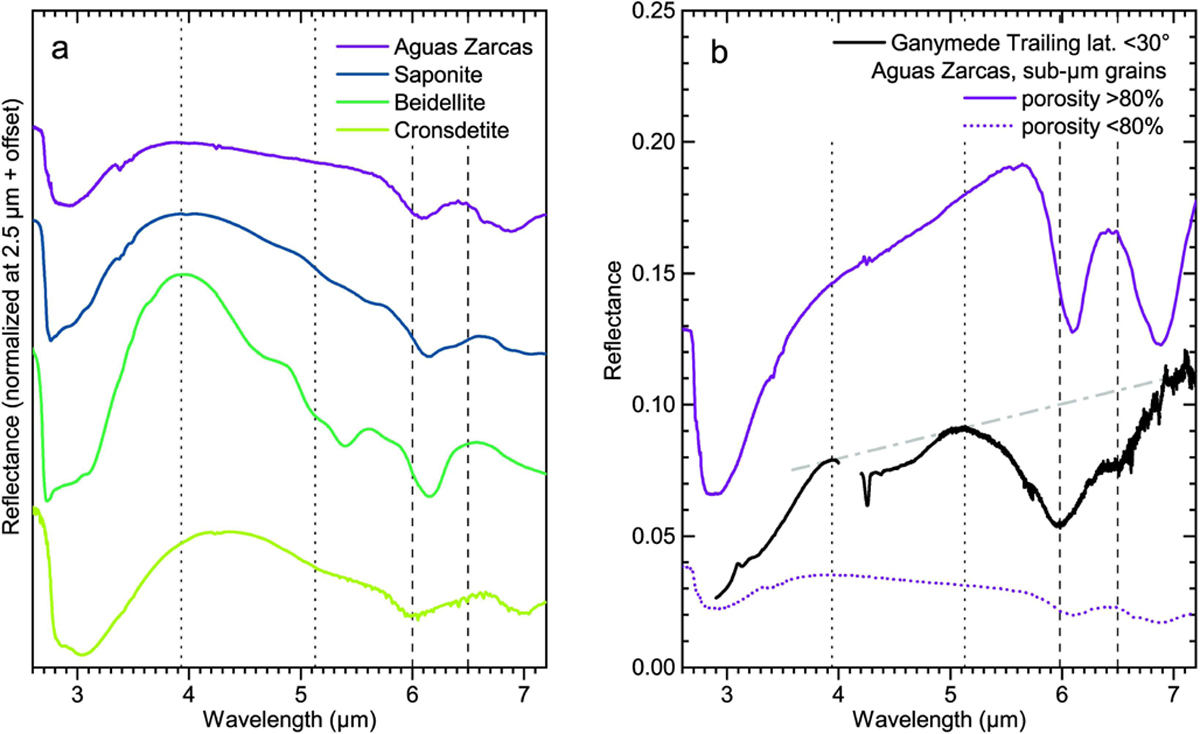Fig. 25

Download original image
Influence of porosity on spectra of phyllosilicates. (a) Laboratory reflectance spectra of Aguas Zarcas CM2 meteorite powder and several phyllosilicate powders and (b) influence of the porosity on the reflectance spectrum of Aguas Zarcas sub-µm powder. Spectra of Aguas Zarcas were measured at IPAG (Institut de Planétologie et d’Astrophysique de Grenoble, see Appendix B). Ganymede’s trailing side equatorial region (<30° latitude N/S) reflectance spectrum (see caption of Fig. 26) is plotted at the same reflectance scale in plot (b) (black line), with the gray dashed-dotted line in plot indicating the potential continuum obtained by drawing a line between the points at 3.9 and 5.1 µm (inter-bands). This continuum has a positive (red) spectral slope, possibly due to a relatively high surface porosity of dark terrains. Spectra of Cronsdetite (M3542) is from the USGS Spectral Library (Kokaly et al. 2017). Spectra of Saponite (<45 µm, SA-EAC-059) and Beidellite (<12 µm, JB-JLB-919-A) are from the NASA Reflectance Experiment LABoratory (RELAB) spectral database. The vertical dotted lines indicate H2O inter-band positions in NIRSpec spectrum, and the vertical dashed lines indicate the band positions in MIRI spectrum.
Current usage metrics show cumulative count of Article Views (full-text article views including HTML views, PDF and ePub downloads, according to the available data) and Abstracts Views on Vision4Press platform.
Data correspond to usage on the plateform after 2015. The current usage metrics is available 48-96 hours after online publication and is updated daily on week days.
Initial download of the metrics may take a while.


